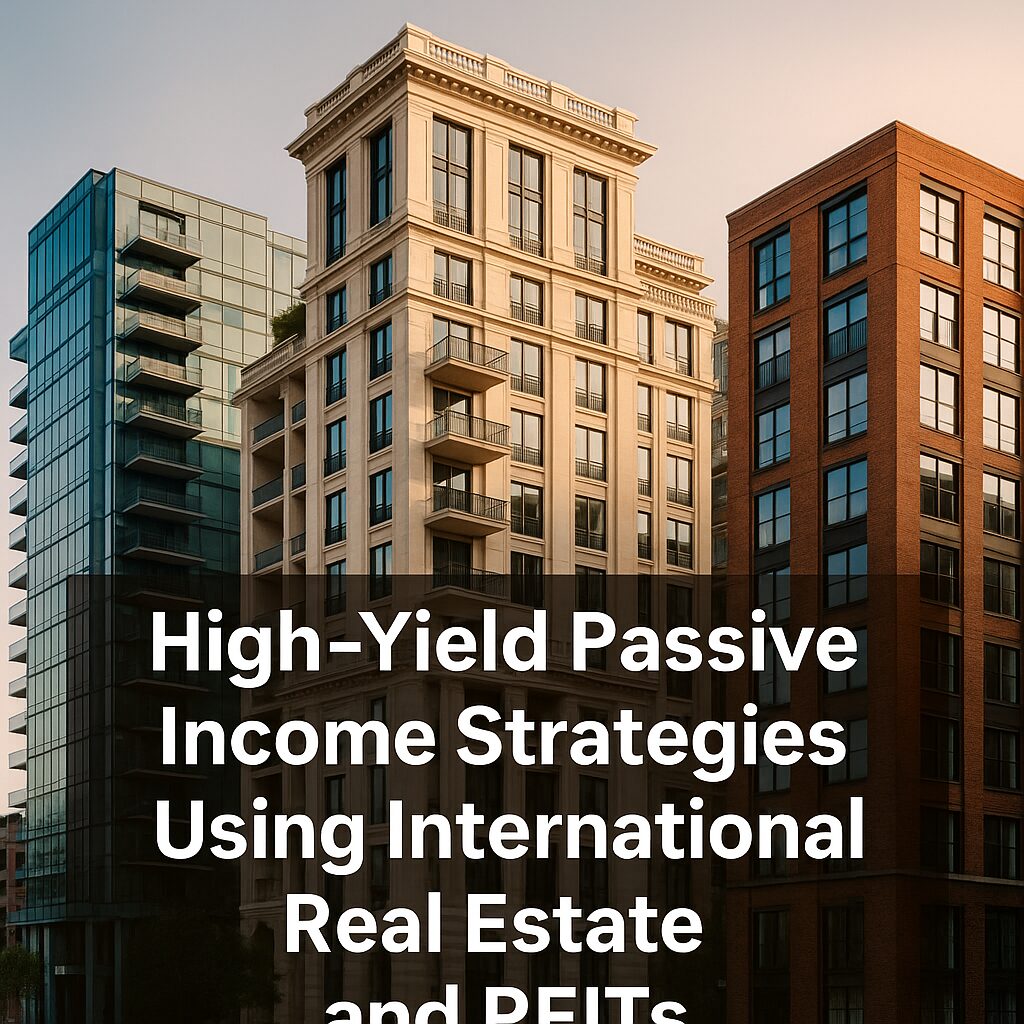Passive income is one of the most coveted financial goals for high-net-worth individuals and ambitious investors alike. The ability to earn steady cash flow without constant active management is not just a lifestyle choice—it’s a wealth preservation and growth strategy. Among the many vehicles available, international real estate and Real Estate Investment Trusts (REITs) stand out as two of the most reliable, scalable, and globally adaptable methods for generating high-yield passive income.
In this article, we’ll explore how to structure an international real estate and REIT-based portfolio that delivers sustainable returns, hedges against economic volatility, and builds long-term wealth.
1) Why International Real Estate and REITs are Powerhouses for Passive Income
Real estate has always been a cornerstone of wealth building. However, limiting your portfolio to domestic markets restricts your income potential and increases exposure to localized risks. By going global, you:
- Tap into high-yield markets where rental returns significantly exceed domestic averages.
- Diversify currency exposure, protecting your income against home currency depreciation.
- Access property appreciation in emerging urban hubs before they become saturated.
- Benefit from different real estate cycles—when one market cools, another may be peaking.
REITs add another dimension: they offer hands-off ownership of income-generating real estate across the globe, with built-in professional management and consistent dividend payouts.
2) Direct International Real Estate Investment
A) Why Direct Ownership Matters
Owning physical property abroad gives you:
- Tangible control over your asset.
- Leverage opportunities via local financing.
- Multiple exit strategies: sell, refinance, or convert to short-term rentals.
B) Where to Invest for High Yield
- Southeast Asia – Cities like Manila, Ho Chi Minh City, and Phnom Penh offer gross rental yields of 6–8%.
- Eastern Europe – Bucharest, Warsaw, and Riga combine affordable property prices with strong rental demand.
- Latin America – Medellín, Mexico City, and Lima are attracting digital nomads and retirees, boosting rental rates.
Pro Tip: Focus on countries with investor-friendly property laws, stable political environments, and clear title systems.
C) Risks to Manage
- Local property taxes and foreign ownership restrictions.
- Currency volatility impacting returns.
- Maintenance and management challenges—use reputable property management firms.
3) REITs – The Global, Hassle-Free Alternative
A) What Are REITs?
A Real Estate Investment Trust (REIT) is a company that owns, operates, or finances income-producing real estate. REITs allow investors to:
- Earn rental income without owning or managing properties directly.
- Access diverse property types—commercial, industrial, hospitality, residential, and data centers.
- Benefit from liquidity—REIT shares trade on major stock exchanges.
B) International REIT Opportunities
- U.S. REITs – High liquidity, strong governance, global investor trust.
- Singapore REITs (S-REITs) – Attractive yields, exposure to pan-Asian markets.
- Australian REITs (A-REITs) – Stable income with exposure to Asia-Pacific growth.
- European REITs – Access to premium commercial real estate in London, Paris, and Frankfurt.
4) Combining Both for Maximum Effect
A hybrid approach that blends direct international real estate with REIT investments allows you to:
- Capture higher yields from direct ownership in emerging markets.
- Maintain liquidity and diversification via REIT holdings in mature markets.
- Balance currency exposure and market cycles.
Example Portfolio Allocation for $1 Million:
- 40% Direct Real Estate – Two high-yield rental properties in emerging markets.
- 40% International REITs – Diversified across sectors and continents.
- 20% Cash & Bonds – Held in multiple currencies for flexibility.
5) Tax Optimization Strategies
International investments introduce complex tax scenarios. Key points:
- Research Double Taxation Agreements (DTAs) between your country and the investment location.
- Use offshore holding companies or trusts to structure ownership.
- Leverage REIT-specific tax advantages—many jurisdictions exempt REIT income from corporate tax if they distribute most profits as dividends.
Consult with cross-border tax specialists to ensure compliance while minimizing liabilities.
6) Risk Management and Due Diligence
Whether investing in property or REITs, due diligence is non-negotiable:
- Legal Review: Verify ownership rights, zoning laws, and tenant protection statutes.
- Market Analysis: Assess rental demand, vacancy rates, and economic stability.
- Currency Hedging: Use forward contracts or multi-currency accounts to manage FX risk.
- REIT Screening: Examine dividend history, debt ratios, and portfolio quality.
7) The Long-Term Play
The true power of international real estate and REITs emerges over decades:
- Rental income compounds as properties appreciate.
- REIT dividends provide reinvestment opportunities.
- Portfolio diversification reduces volatility, creating a more predictable income stream.
By reinvesting dividends and surplus rental income into additional properties or REIT shares, you create a self-reinforcing cycle of growth—the hallmark of sustainable wealth.
8) Conclusion
International real estate and REITs offer high-yield, diversified, and sustainable passive income opportunities. For investors willing to conduct due diligence and structure their holdings intelligently, these assets can become the backbone of a resilient, global wealth strategy.
📌 Next Article Preview
In our next article, we’ll explore “The Offshore Wealth Blueprint – Legal and Secure Methods to Grow Your Capital Abroad”—covering banking, asset protection structures, and international investment vehicles used by the world’s wealthiest individuals.
